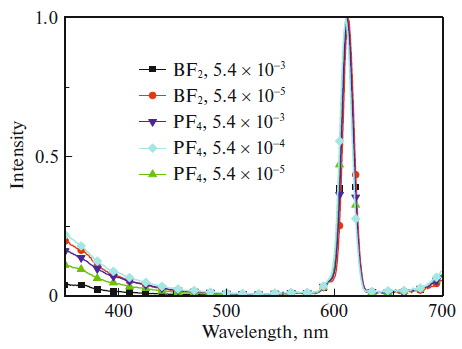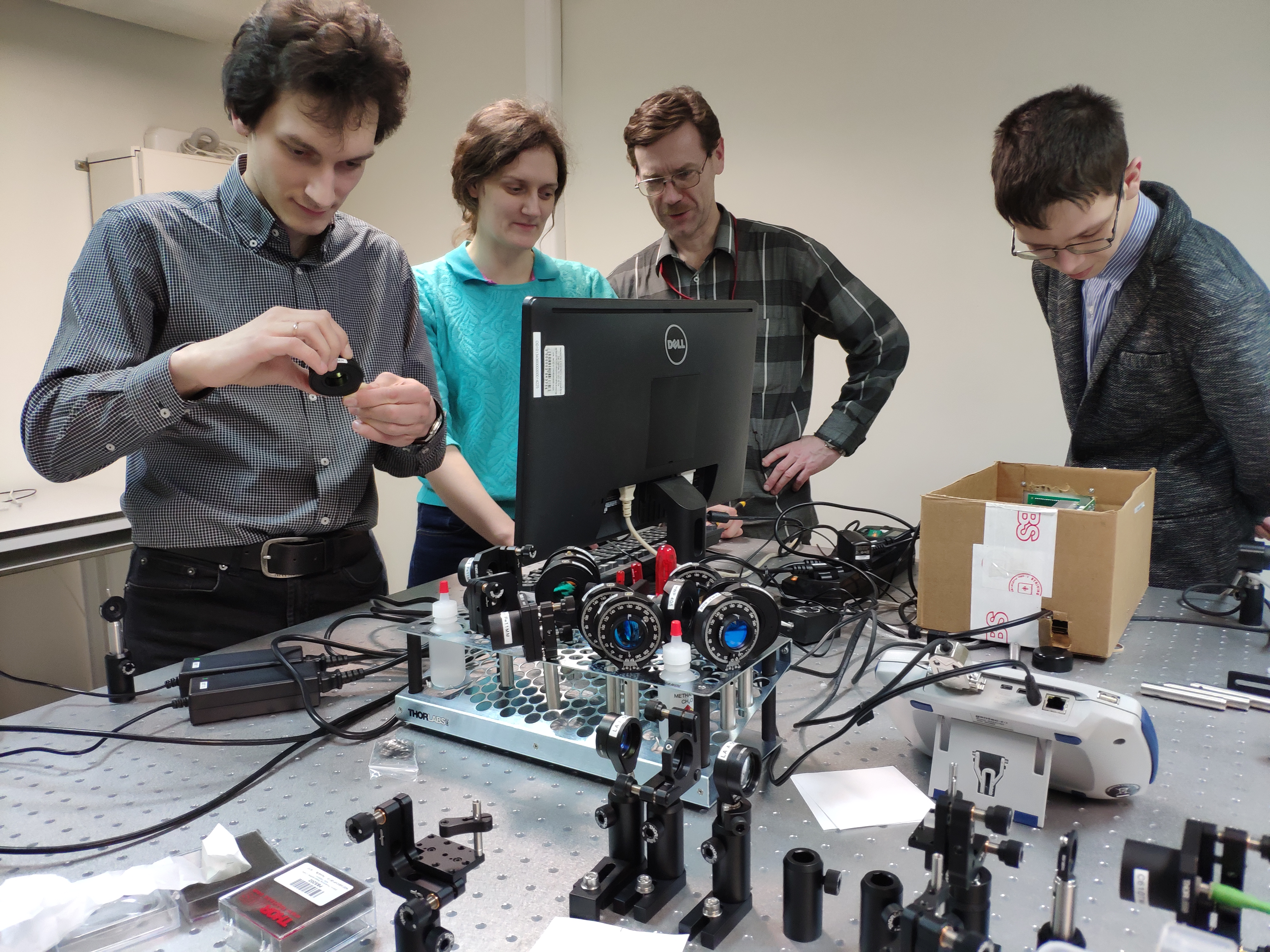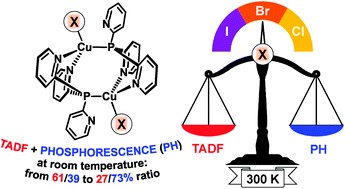Категория: Новости.
by M. Tuzhilkin, P. Bespalova, M. Mishin, I. Kolesnikov, K. Karabeshkin, P. Karaseov, A. Titov
Semiconductors, 54(1), 137-143.
https://doi.org/10.1134/S106378262001025X

The formation of nanoparticles under the irradiation of a thin metallic gold film by accelerated atomic and molecular ions is demonstrated. The obtained structures are used to form porous silicon by the metal-assisted chemical etching. The size of the gold nanoparticles and structure of porous silicon greatly depend on the type of incident particles and their fluence. A local increase in the density of energy released at the target surface under molecular ion bombardment significantly reduces the doses required to form the desired film morphologies and spread of nanoparticles over the surface and simultaneously makes a weaker radiative impact on the substrate. The shape of the fluorescence and fluorescence-excitation spectra of porous silicon obtained from the irradiated structures is independent of the irradiation parameters, but changes with the etching-solution concentration.
Категория: Новости.
В ресурсном центре «Оптические и лазерные методы исследования вещества» совместно со специалистами Центра Квантовых Технологий Московского государственного университета им. М.В.Ломоносова ведутся работы по монтажу комплекса «Квантовая оптика».

Категория: Новости.
Введено в эксплуатацию новое уникальное оборудование "Комплекс люминесцентной микроскопии с временным разрешением Nikon Ti2-E "
Данная уникальная научная установка (УНУ) предназначена для регистрации микроскопических изображений на основе анализа интенсивности люминесценции и времен жизни люминесценции при возбуждении лазерными источниками излучения.
В состав приборного комплекса входит инвертированный конфокальный люминесцентный биологический микроскоп Nikon Ti2-E, система FLIM/PLIM микроскопии Becker&Hickl, фемтосекундный лазер модель MAI TAI HP Spectra-Physics.
Категория: Новости.
by A. Baranov, A. Berezin, D. Samsonenko, A. Mazur, P. Tolstoy, V. Plyusnin, I. Kolesnikov, A. Artem’ev
Dalton Trans., 49, 3155-3163.
https://doi.org/10.1039/D0DT00192A

A series of Cu(I) halide complexes derived from tris(2-pyridyl)phosphine (Py3P), [Cu2(Py3P)2X2] (X = Cl, Br, I), have been synthesized by a straightforward reaction in solution or through a mechanochemical route. At room temperature, the solid complexes exhibit bright dual-mode photoluminescence (λmax = 520–550 nm, τ = 14.5–20.0 μs, and ΦPL ≈ 53%), expressed by thermally activated delayed fluorescence (TADF) combined with phosphorescence (PH), originating from 1(M + X)LCT and 3(M + X)LCT excited states, respectively. Remarkably, the balance of these radiative processes at 300 K is regulated by halogen atom nature, switching from TADF-assisted phosphorescence to PH-admixed TADF. The emission of [Cu2(Py3P)2Cl2] at 300 K is largely contributed by PH (73%) admixed with the TADF fraction (27%) and [Cu2(Py3P)2Br2] also emits mainly PH (65%) admixed with the larger TADF fraction (35%). Meanwhile, for [Cu2(Py3P)2I2], the TADF channel becomes dominating (61%) and PH contribution drops to 39%. The photophysical study corroborated by (TD)DFT computations has revealed that this effect arises mainly from the narrowing of the ΔE(S1 − T1) gap of the [Cu2(Py3P)2X2] complexes in the order Cl (1500 cm−1) > Br (1250 cm−1) > I (1000 cm−1) which facilitates the TADF pathway and suppresses PH in the same order.
Категория: Новости.
by S. Kudryashov, A. Samokhvalov, S. Shelygina, A. Karabutov, G. Tsibidis, D. Pankin, V. Veiko
Laser Physics Letters, 17, 105302, 1-6.

The ultrasonic characterization of the propagation of femtosecond laser pulses in pure transparent water and colored phenol-red dye solutions at variable concentrations indicates their thermoacoustic pressure generation due to intrinsic multi-photon absorption in the low-power sub-filamentation regime and sub-linear pressure response of sub-critical plasma via free-carrier absorption in the filamentation regime. Multi-photon absorption appears to be concentration dependent for water and dye solutions, while plasma absorption demonstrates a universal trend for all these liquids. In the filamentation regime, through the non-linear laser-matter interactions, not only new optical frequencies (intense white-light supercontinua) were generated, but supercontinuum-based ultrafast broadband spectroscopy in the filaments also revealed many additional transient absorption bands of the dye molecules, induced via power-dependent and concentration-independent stimulated Raman scattering.


 Русский (РФ)
Русский (РФ)  English (UK)
English (UK) 

